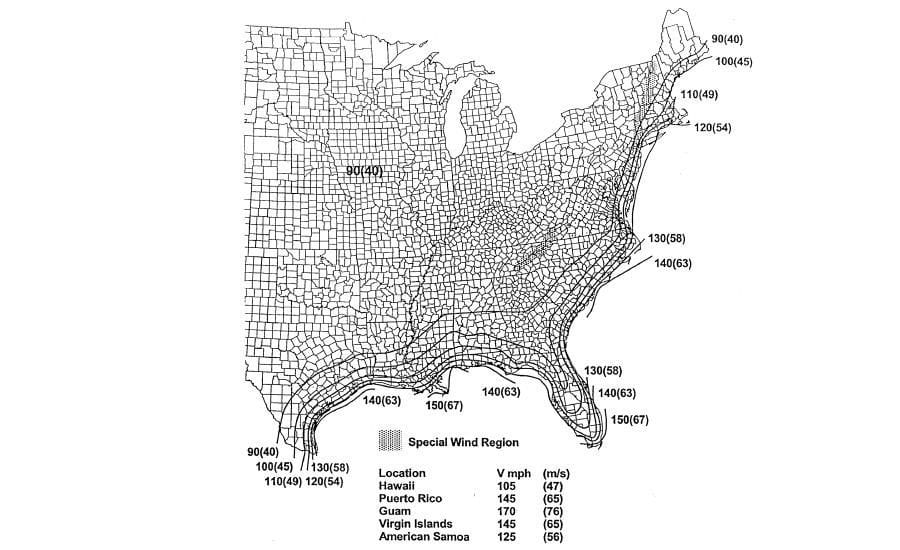SECTION 1807.1.2.1
FLOOD HAZARD AREAS
For buildings and structures in flood hazard areas as established in Section 1612.3, the finished ground level of an under-floor space such as a crawl space shall be equal to or higher than the outside finished ground level.
Exception: Under floor spaces of Group R-3 building that meet the requirements of FEMA/FIA-TB-11.
CODE INTERPRETATION
This section implies that the under floor space (crawl space) shall be at equal height or higher than the ground level in flood areas. Flood zones are defined as areas identified by the Federal Emergency Management Agency and adopted by the corresponding governing body.
The only exception to this section is Group R-3 buildings that meet FEMA/FIA-TB-11.
DAMPPROOFING AND WATERPROOFING
SECTION 1504.5
EDGE SECUREMENT FOR LOW-SLOPE ROOFS
Low-slope membrane roof system metal edge securement, except gutters, shall be designed and installed for wind loads in accordance with Chapter 16 and tested for resistance in accordance with ANSI/SPRI ES-1, except the basic wind speed shall be determined from Figure 1609.
CODE INTERPRETATION
The intent of the code is to ensure that the design and installation of roof edge metals and copings meet specific criteria including material specifications, wind resistance of the edge metal and the structural integrity of the substrate that anchors the edge metal, i.e. nailers, etc. The key elements considered in determining the loads on the roof edge are:
- Wind Speed
- Occupancy
- Building Height
- Location of the edge material
- Building Location
ES-1 TEST METHODS
There are three test methods required under ANSI/SPRI ES-1. They are:
- RE-1: Roof Edge Termination Test
- RE-2: Pull-off Test for Metal Edge Flashing
- RE-3: Pull-off Test for Metal Wall Coping
ROOFING
Figure 1609, Basic Wind Speed from the 2009 International Building Code.


